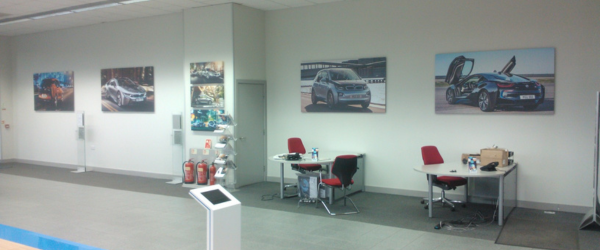The Psychology of Office Branding: Influencing Perception and Performance
In today’s competitive business landscape, the importance of a strong brand identity cannot be overstated. However, while much attention is focused on external branding efforts, the influence of office branding on internal stakeholders – particularly employees – often goes underappreciated.
Office branding extends beyond aesthetics; it’s a powerful tool in shaping organisational culture, enhancing employee engagement, and driving performance. Understanding the psychology behind office branding can unlock new methods to motivate staff, foster a sense of belonging, and reflect the company’s values within the workplace itself.
Creating a Sense of Identity and Belonging
Office branding plays a crucial role in generating a sense of identity and belonging among employees. A workspace that reflects the company’s mission, values, and goals can instil a strong sense of pride and ownership in employees. When individuals feel connected to the brand, their commitment to the company’s objectives deepens, translating into enhanced loyalty and reduced turnover rates. According to a study by Gallup, engaged teams show a 21% increase in profitability, underscoring the importance of fostering a work environment where employees feel part of something greater than themselves.
Influencing Employee Perception and Behaviour
The design and branding of an office can significantly influence employee perception and behaviour. Colour psychology, for instance, can have a profound impact on mood and productivity. Blue hues are known to promote calmness and clarity, making them ideal spaces for requiring focus and mental concentration. In contrast, yellow can inspire creativity and energy, perfect for collaborative and dynamic areas. Strategic placement of brand elements and use of company colours can subtly reinforce corporate values and encourage desired behaviours, ultimately shaping the workplace culture through office branding.
Enhancing Performance through Environmental Cues
The physical environment, including office layout, lighting, and furniture, serves as a constant cue to employees about company priorities and expectations. An open-plan office might signal value on collaboration and transparency, while private spaces denote respect for concentration and individual work. Good lighting and ergonomically designed furniture not only reflect a company’s care for its employees’ well-being but also significantly contribute to reducing fatigue and enhancing overall productivity.
Boosting Morale and Attracting Talent
Quality office branding doesn’t just form a place to work, it’s a statement of what the company stands for. For potential employees, it can be a deciding factor in choosing where to work/apply to work. A workspace that visibly values innovation, sustainability, or collaboration, for example, can attract like-minded individuals, meaning that office branding is a powerful tool in talent acquisition and retention. Furthermore, for current employees, a workspace that celebrates achievements, milestones, and the company’s history can boost morale and reinforce a positive work culture.
Strategies for Effective Office Branding
1. Reflect Your Brand’s Core Values: Ensure your office design reflects the core values and mission of your company. Use visual elements, such as artwork, murals, and colours that resonate with your brand identity.
2. Create Functional Spaces: Design spaces that not only look good but also cater to the needs of your employees. Include areas for collaboration, quiet workspaces, and leisure zones to enhance creativity and productivity.
3. Incorporate Biophilic Design: Integrating natural elements into the office branding can improve wellbeing and reduce stress, leading to happier, more productive employees.
4. Generate a Sense of Community: Use common areas to showcase company achievements and celebrate diversity. This can help build a stronger sense of community and belonging among employees.
5. Regular Feedback and Evolution: Office branding is not a one-time effort. Regular feedback from employees can provide insights into further improvements, ensuring the office space evolves with the company and its workforce.
The psychology of office branding reveals its profound impact on employee perception, morale, and performance. By thoughtfully designing and branding office spaces that reflect the company’s values and cater to the needs of employees, organisations can cultivate a positive workplace culture, attract, and retain talent, and ultimately drive business success.
Here at Severn Signs, we have been providing quality and professional office branding for many years and are certainly experts in this field. So please feel free to get in touch today.

